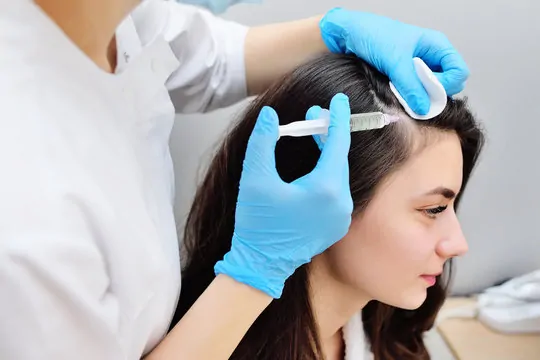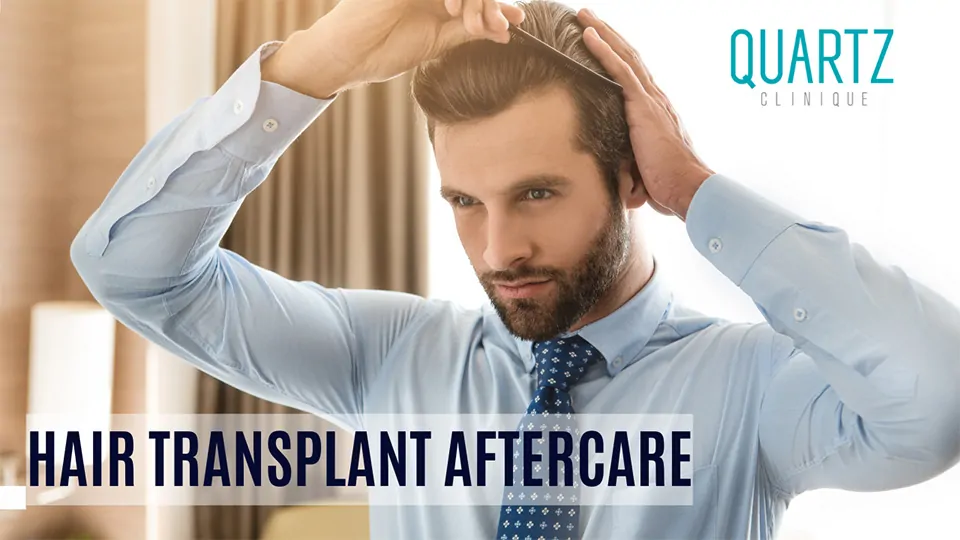A successful hair transplant procedure does not end in the operating room. The post-operative period, known as aftercare, is a crucial stage that directly influences the survival of grafts, the natural appearance of the results, and the overall success rate. Patients often experience anxiety not only before but also after surgery, as the recovery period requires diligence and patience.
In Turkey, particularly in Istanbul, internationally accredited clinics such as Quartz Clinique provide patients with not only advanced surgical techniques but also structured aftercare programs designed to ensure the highest success rates.
Importance of Hair Transplant Aftercare
- Ensures proper healing of the transplanted and donor areas.
- Prevents complications such as infection, swelling, and scarring.
- Increases the survival rate of grafts.
- Promotes faster regrowth and healthier hair density.
- Improves patient comfort and confidence during recovery.
Hair Transplant Aftercare Timeline
| Timeline | Expected Condition | Care Instructions |
|---|---|---|
| Day 1–7 | Mild swelling, crusts, itching possible | Sleep with head elevated; avoid touching grafts; first wash with medical shampoo on day 3 |
| Week 2 | Redness fades, scabs fall off | Continue gentle washing; virtual or in-person check-up recommended |
| Month 1 | Shock loss begins | Stay patient; avoid strenuous exercise and alcohol |
| Month 2 | New weak hairs visible | Protect scalp from sunlight; continue mild shampoos |
| Month 3 | Noticeable new growth | Report infections/blisters to surgeon; follow medical advice |
| Month 6 | Thicker hair, 70–80% coverage | Can comb and trim hair; avoid extreme heat/cold |
| Month 12 | Full recovery and final results | Final clinic check-up; normal styling allowed |
Key Elements of Aftercare
Sleeping Position
- Sleep on your back with your head elevated at 45 degrees.
- Use special clinic-provided pillows during the first week.
Washing and Hygiene
- First wash performed at the clinic on day 3.
- Use medical shampoo and moisturizer daily until scabs fall off (7–10 days).
- Avoid scratching or rubbing the scalp.
Protecting the Scalp
- Wear a Panama-style hat for the first 5 days.
- Avoid tight hats until scabs are gone.
- Protect from dust, UV rays, and pollution for at least 2 weeks.
Shock Loss and Regrowth
- Shock shedding is normal in the first 1–2 months.
- New permanent growth starts at 3–4 months.
- By 12 months, full density is visible.
Pain, Swelling, and Medication
- Mild pain is common for a few days; controlled with painkillers.
- Swelling usually peaks by day 4, subsiding within 5 days.
- Antibiotics are often prescribed for 3–5 days.
- Supplements such as zinc, iron, and vitamin B complex may support recovery.

Things to Avoid After Hair Transplant
- No smoking or alcohol for 15 days.
- No swimming, sauna, or tanning for 3 weeks.
- No heavy exercise for 4 weeks.
- No scratching, tight hats, or direct trauma to scalp.
Frequently Asked Questions (FAQ)
Is shock loss permanent?
No. It is part of the natural follicle cycle. New hair grows back within 3–4 months.
When can I return to work?
Most patients return within 3–5 days, depending on occupation.
When can I exercise again?
Light activity after 2 weeks; strenuous exercise after 4 weeks.
Can I dye or style my new hair?
Yes, after 6 months once follicles are fully stable.
When will I see final results?
At around 12 months, with visible density and natural appearance.
Hair transplant aftercare is as important as the procedure itself. With correct post-operative care, the survival of grafts is maximized, side effects are minimized, and natural results are ensured.
By choosing Istanbul, Turkey for your treatment, you benefit not only from the expertise of internationally renowned surgeons but also from structured aftercare programs, luxury clinic facilities, and all-inclusive medical tourism packages.
With patience, discipline, and professional guidance, your hair transplant journey leads to the confident and healthy appearance you desire.

